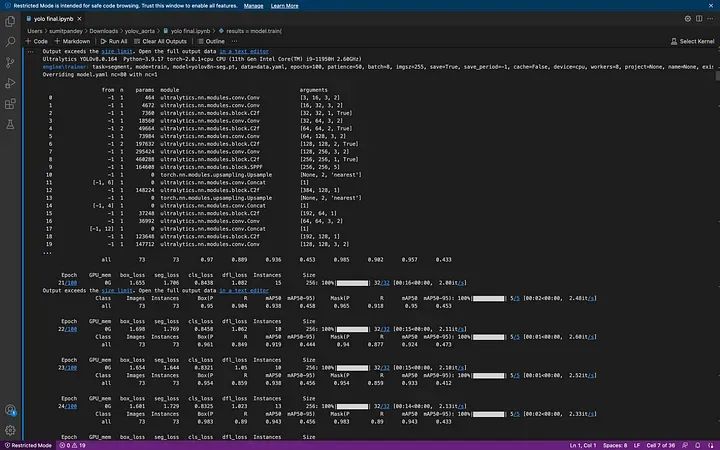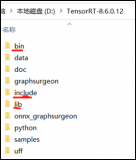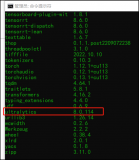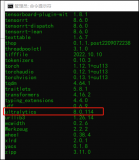YOLOv8是一種令人驚嘆的分割模型;它易于訓(xùn)練、測試和部署。在本教程中,我們將學(xué)習(xí)如何在自定義數(shù)據(jù)集上使用YOLOv8。但在此之前,我想告訴你為什么在存在其他優(yōu)秀的分割模型時應(yīng)該使用YOLOv8呢?
我正在從事與醫(yī)學(xué)圖像分割相關(guān)的項(xiàng)目,當(dāng)我的合作者突然告訴我,我們只有來自175名患者的600張圖像和標(biāo)注。在醫(yī)學(xué)成像領(lǐng)域,這是一個常見的問題,因?yàn)榕R床醫(yī)生是最忙碌的人,他們有許多職責(zé)。然而,他向我保證,一旦模型訓(xùn)練好(并進(jìn)行微調(diào)),我們將獲得來自其他300多名患者的圖像和標(biāo)注,作為額外的測試集以評估我們的模型。
我開始將這50名患者分為訓(xùn)練、測試和驗(yàn)證數(shù)據(jù)集,使用8010的比例。對于模型,我首先嘗試了UNet及其變體(ResUNet、Attention UNet、Res-Attention UNet)。這些模型在訓(xùn)練、測試和驗(yàn)證數(shù)據(jù)集上表現(xiàn)出色,但在額外的測試集上表現(xiàn)糟糕。然后我想,“讓我們試試YOLOv8;如果有效,那將是很好的,如果不行,那將是一次有趣的學(xué)習(xí)經(jīng)歷。”幾個小時后,它奏效了,令我驚訝的是,在額外的測試集上遠(yuǎn)遠(yuǎn)超出了我的預(yù)期。我不能透露具體數(shù)值,因?yàn)檎撐娜栽趯彶橹校以敢夥窒砣绾螌⑵湔{(diào)整為自定義數(shù)據(jù)集,以便你可以節(jié)省大量工作時間。讓我們開始制定攻略。
攻略
以下是我們將學(xué)習(xí)的主題:
1. YOLOv8簡介
2. 安裝庫
3. 數(shù)據(jù)集準(zhǔn)備
4. 訓(xùn)練準(zhǔn)備
5. 訓(xùn)練模型
6. 結(jié)果
YOLOv8簡介
YOLOv8是YOLO系列的最新版本,用于實(shí)時目標(biāo)檢測,由Ultralytics開發(fā)。它通過引入空間注意力和特征融合等修改來提高準(zhǔn)確性和速度。該架構(gòu)將修改過的CSPDarknet53骨干網(wǎng)絡(luò)與用于處理的先進(jìn)頭部相結(jié)合。這些先進(jìn)之處使YOLOv8成為各種計算機(jī)視覺任務(wù)的最新選擇。
安裝庫
以下是安裝庫的選項(xiàng)。
# Install the ultralytics package using conda conda install -c conda-forge ultralytics or # Install the ultralytics package from PyPI pip install ultralytics
數(shù)據(jù)集準(zhǔn)備
數(shù)據(jù)集需要進(jìn)行兩個步驟的處理:
步驟1:請按照以下結(jié)構(gòu)組織您的數(shù)據(jù)集(圖像和掩膜):理想情況下,訓(xùn)練、測試和驗(yàn)證(val)的比例為8010。數(shù)據(jù)集文件夾的安排如下:
dataset | |---train | |-- images | |-- labels | |---Val | |-- images | |-- labels | |---test | |-- images | |-- labels
步驟2:第二步是將 .png(或任何類型)掩膜(標(biāo)簽)轉(zhuǎn)換為所有3個標(biāo)簽文件夾中的 .txt 文件。以下是將標(biāo)簽(.png、.jpg)轉(zhuǎn)換為 .txt 文件的Python代碼。(您也可以在此操作)
將每個標(biāo)簽圖像轉(zhuǎn)換為 .txt 文件
import numpy as np
from PIL import Image
import numpy as np
from PIL import Image
from pathlib import Path
def create_label(image_path, label_path):
# Load the image from the given path and convert it to a NumPy array
mask = np.asarray(Image.open(image_path))
# Find the coordinates of non-zero (i.e., not black) pixels in the mask's first channel (assumed to be red)
rows, cols = np.nonzero(mask[:, :, 0])
# If no non-zero pixels are found in the mask, return early as there's nothing to label
if len(rows) == 0:
return # Optionally, handle the case of no non-zero pixels as needed
# Calculate the normalized coordinates by dividing by the respective dimensions of the image
# This is done to ensure that the coordinates are relative (between 0 and 1) rather than absolute
normalized_coords = [(col / mask.shape[1], row / mask.shape[0]) for row, col in zip(rows, cols)]
# Construct a string representing the label data
# The format starts with '0' (which might represent a class id or similar) followed by pairs of normalized coordinates
label_line = '0 ' + ' '.join([f'{cord[0]} {cord[1]}' for cord in normalized_coords])
# Ensure that the directory for the label_path exists, create it if not
Path(label_path).parent.mkdir(parents=True, exist_ok=True)
# Open the label file in write mode and write the label_line to it
with open(label_path, 'w') as f:
f.write(label_line)
import os
for x in ['train', 'val', 'test']:
images_dir_path = Path(f'datasets/{x}/labels')
for img_path in images_dir_path.iterdir():
if img_path.is_file() and img_path.suffix.lower() in ['.jpg', '.jpeg', '.png', '.bmp']:
label_path = img_path.parent.parent / 'labels_' / f'{img_path.stem}.txt'
label_line = create_label(img_path, label_path)
else:
print(f"Skipping non-image file: {img_path}")
請注意:在運(yùn)行上述代碼后,請不要忘記從標(biāo)簽文件夾中刪除標(biāo)簽(掩膜)圖像。
訓(xùn)練準(zhǔn)備
為訓(xùn)練創(chuàng)建 'data.yaml' 文件。只需在Python中運(yùn)行下面的代碼,它將為YOLOv8創(chuàng)建 'data.yaml' 文件。
yaml_content = f''' train: train/images val: val/images test: test/images names: ['object'] # Hyperparameters ------------------------------------------------------------------------------------------------------ # lr0: 0.01 # initial learning rate (i.e. SGD=1E-2, Adam=1E-3) # lrf: 0.01 # final learning rate (lr0 * lrf) # momentum: 0.937 # SGD momentum/Adam beta1 # weight_decay: 0.0005 # optimizer weight decay 5e-4 # warmup_epochs: 3.0 # warmup epochs (fractions ok) # warmup_momentum: 0.8 # warmup initial momentum # warmup_bias_lr: 0.1 # warmup initial bias lr # box: 7.5 # box loss gain # cls: 0.5 # cls loss gain (scale with pixels) # dfl: 1.5 # dfl loss gain # pose: 12.0 # pose loss gain # kobj: 1.0 # keypoint obj loss gain # label_smoothing: 0.0 # label smoothing (fraction) # nbs: 64 # nominal batch size # hsv_h: 0.015 # image HSV-Hue augmentation (fraction) # hsv_s: 0.7 # image HSV-Saturation augmentation (fraction) # hsv_v: 0.4 # image HSV-Value augmentation (fraction) degrees: 0.5 # image rotation (+/- deg) translate: 0.1 # image translation (+/- fraction) scale: 0.2 # image scale (+/- gain) shear: 0.2 # image shear (+/- deg) from -0.5 to 0.5 perspective: 0.1 # image perspective (+/- fraction), range 0-0.001 flipud: 0.7 # image flip up-down (probability) fliplr: 0.5 # image flip left-right (probability) mosaic: 0.8 # image mosaic (probability) mixup: 0.1 # image mixup (probability) # copy_paste: 0.0 # segment copy-paste (probability) ''' with Path('data.yaml').open('w') as f: f.write(yaml_content)
訓(xùn)練模型
一旦數(shù)據(jù)準(zhǔn)備好,其余的非常簡單,只需運(yùn)行以下代碼。
import matplotlib.pyplot as plt
from ultralytics import YOLO
model = YOLO("yolov8n-seg.pt")
results = model.train(
batch=8,
device="cpu",
data="data.yaml",
epochs=100,
imgsz=255)

恭喜,你成功了。現(xiàn)在你會看到一個 'runs' 文件夾,你可以在其中找到所有的訓(xùn)練矩陣和圖表。
結(jié)果
好,讓我們在測試數(shù)據(jù)上檢查結(jié)果:
model = YOLO("runs/segment/train13/weights/best.pt") # load the model
file = glob.glob('datasets/test/images/*') # let's get the images
現(xiàn)在讓我們在圖像上運(yùn)行代碼。
# lets run the model over every image
for i in range(len(file)):
result = model(file[i], save=True, save_txt=True)
將每個 Pred.txt 文件轉(zhuǎn)換為 mask.png
import numpy as np
import cv2
def convert_label_to_image(label_path, image_path):
# Read the .txt label file
with open(label_path, 'r') as f:
label_line = f.readline()
# Parse the label line to extract the normalized coordinates
coords = label_line.strip().split()[1:] # Remove the class label (assuming it's always 0)
# Convert normalized coordinates to pixel coordinates
width, height = 256, 256 # Set the dimensions of the output image
coordinates = [(float(coords[i]) * width, float(coords[i+1]) * height) for i in range(0, len(coords), 2)]
coordinates = np.array(coordinates, dtype=np.int32)
# Create a blank image
image = np.zeros((height, width, 3), dtype=np.uint8)
# Draw the polygon using the coordinates
cv2.fillPoly(image, [coordinates], (255, 255, 255)) # Fill the polygon with white color
print(image.shape)
# Save the image
cv2.imwrite(image_path, image)
print("Image saved successfully.")
# Example usage
label_path = 'runs/segment/predict4/val_labels/img_105.txt'
image_path = 'runs/segment/predict4/val_labels/img_105.jpg'
convert_label_to_image(label_path, image_path)
file = glob.glob('runs/segment/predict11/labels/*.txt')
for i in range(len(file)):
label_path = file[i]
image_path = file[i][:-3]+'jpg'
convert_label_to_image(label_path, image_path)
審核編輯:湯梓紅 -
模型
+關(guān)注
關(guān)注
1文章
3032瀏覽量
48359 -
數(shù)據(jù)集
+關(guān)注
關(guān)注
4文章
1197瀏覽量
24538 -
醫(yī)學(xué)圖像分割
+關(guān)注
關(guān)注
0文章
5瀏覽量
819
原文標(biāo)題:基于YOLOv8的自定義醫(yī)學(xué)圖像分割
文章出處:【微信號:vision263com,微信公眾號:新機(jī)器視覺】歡迎添加關(guān)注!文章轉(zhuǎn)載請注明出處。
發(fā)布評論請先 登錄
相關(guān)推薦
基于YOLOv8實(shí)現(xiàn)自定義姿態(tài)評估模型訓(xùn)練

使用YOLOv8做目標(biāo)檢測和實(shí)例分割的演示
YOLOv8自定義數(shù)據(jù)集訓(xùn)練到模型部署推理簡析
TensorRT 8.6 C++開發(fā)環(huán)境配置與YOLOv8實(shí)例分割推理演示

在AI愛克斯開發(fā)板上用OpenVINO?加速YOLOv8目標(biāo)檢測模型

YOLOv8版本升級支持小目標(biāo)檢測與高分辨率圖像輸入

AI愛克斯開發(fā)板上使用OpenVINO加速YOLOv8目標(biāo)檢測模型

在AI愛克斯開發(fā)板上用OpenVINO?加速YOLOv8-seg實(shí)例分割模型

教你如何用兩行代碼搞定YOLOv8各種模型推理

在AI愛克斯開發(fā)板上用OpenVINO?加速YOLOv8-seg實(shí)例分割模型

解鎖YOLOv8修改+注意力模塊訓(xùn)練與部署流程

如何修改YOLOv8的源碼

用自己的數(shù)據(jù)集訓(xùn)練YOLOv8實(shí)例分割模型

YOLOv8實(shí)現(xiàn)旋轉(zhuǎn)對象檢測





 基于YOLOv8的自定義醫(yī)學(xué)圖像分割
基于YOLOv8的自定義醫(yī)學(xué)圖像分割










評論